The best smartphones
Malarie Gokey,Antonio Villas-Boas

- The best smartphones have never been more powerful or more attractive looking.
- We've researched and tested dozens of smartphones to bring you the best ones you can buy.
- Among the current iPhone models, the iPhone 11 is our top pick, while the Pixel 4, OnePlus 7T, Pixel 3a, and Samsung Galaxy S20 are great Android options in their respective price ranges.
We've come a long way since the Nokia 8110 flip phone made its Hollywood debut in a little film called "The Matrix," in 1999. It's hard to believe that less than a decade later, Apple would start a revolution with what is considered to be the first modern smartphone, the iPhone. Today, smartphones are everywhere and they have never been more powerful or better looking.
You can't go wrong with any of the major flagship smartphones that have been released in 2019 and 2020 — although it's early days yet for the new year. You can even get excellent phones for $500 or less these days.
In this guide, we've selected the absolute best smartphones at every price point, including top-tier phones, flagship killers, and affordable phones that work as well as many mid-range phones. We also highlight things you should look for in your next smartphone.
Here are the best smartphones in 2020:- Best iPhone: iPhone 11
- Best Google phone: Google Pixel 4
- Best flagship phone for less: OnePlus 8
- Best budget phone: iPhone SE (2020)
- Best high-end flagship phone: OnePlus 8 Pro
Updated on 04/29/2020 by Antonio Villas-Boas: Added the OnePlus 8 Pro as our top pick for the best high-end flagship smartphone after testing. The OnePlus 8 Pro offers the same design, performance, cameras, and features as the Samsung Galaxy S20 (our previous top high-end flagship pick) for a lower price.
Read the original article on Business InsiderCheck out our other smartphone buying guides
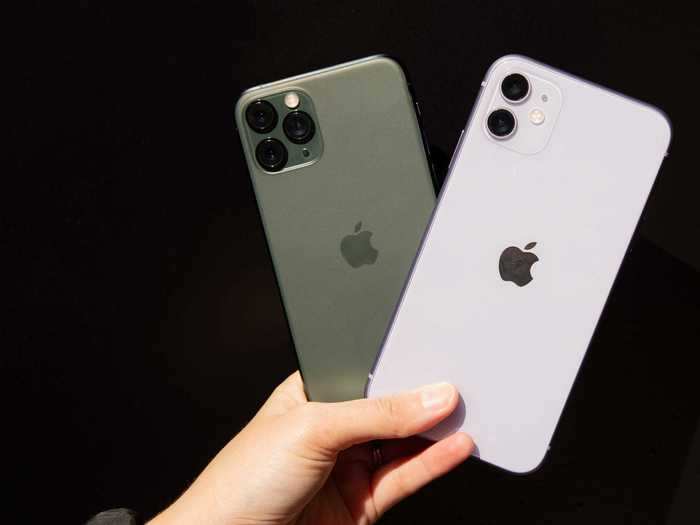
Budget phones have never been this good or this affordable.
The best iPhone for every type of person and budgetThe iPhone lineup is full of great devices — but which one should you buy? We break it down.
How to choose a smartphone
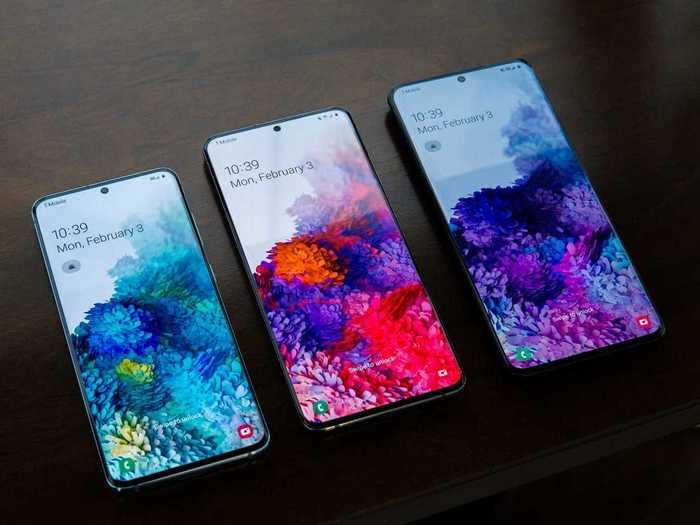
Your smartphone is the one piece of tech that you carry on your person nearly every hour of every day, so you should really love the phone you're carrying. To ensure that you get the best smartphone for your needs and budget, we've broken it down by the specifications that you'll see listed on carrier and company websites. You'll also find
Processor and RAM
The processor and RAM (memory) are the two most important parts of any phone. They determine how smoothly it runs and works through intense tasks like gaming or multitasking.
Storage space
Storage is also incredibly important because the amount of storage you have determines how many photos, songs, videos, and apps you can have downloaded on your phone; a chunk of storage is also taken up by the operating system to handle behind-the-scenes processes, so keep in mind that you don't have access to the full amount. Never buy a 16GB phone — you will run out of space and regret it. 32GB is okay for most people, but it's rare to find in 2020. Most phones now offer 64GB of storage, which is typically enough for most people's needs. If you take a lot of photos, have tons of songs or videos downloaded, or you're an app junkie, you will want 128GB or 256GB of storage. Unfortunately, adding storage costs money.
Screen size
Phones come in several sizes now, though most are growing ever bigger. Your average smartphone has at least a 5-inch screen, and many have nearly 6-inch screens. Luckily, bezels are slimming down, so now, having a phone with a 5.8-inch screen like the iPhone 11 Pro means you're holding a small-sized phone that's easy to grasp and operate one-handed.
Battery life
Most smartphones can last through a busy day and a half, but some can endure two days of heavy use. The larger the phone, the more battery life it typically has.
Ports (or lack thereof)
Ever since Apple axed the 3.5mm headphone jack on the iPhone 7 and 7 Plus, most phone makers have been getting rid of the jack, too. That means you can't plug your wired headphones in unless you use an adapter. If you end up with a phone that lacks the jack, we recommend you get a nice pair of wireless headphones.
Software
Apple provides updates to its iPhones for about four years after their release, if not longer, so theoretically, you can have your iPhone up to date for years before you should buy a new one. My colleague still uses an iPhone SE from 2016 and has had no issues with everyday usage. Always update your software to get important security patches and new features. You may experience slowdown on older devices, but iPhones typically hold up well.
Android phones are something else entirely. Unless you have a Google Pixel phone, you won't get software updates all that quickly — if at all. Google also ceases updates after a time, but security patches continue longer.
Price
Consider your purchase as an investment. Your smartphone is more than a communication device — it is your camera, your computer, your photo album, your music player, and your gaming console, too. A good smartphone can last for years, but a cheap one with poor specs will be outdated more quickly, and you'll end up spending more in the long run. That $1,000 price tag on the iPhone 11 Pro looks less scary unless you consider that it could last you for four years or more.
How to buy
You can get a smartphone from your carrier by paying full price or paying in monthly installments. You can also buy one at stores like Target, Best Buy, Amazon, or directly from the phone maker. We recommend you buy it unlocked so you can switch carriers any time you choose, but we understand that carrier deals are often too good to give up.
For iPhone owners, the Apple iPhone Upgrade Program lets you get a new iPhone every year so long as you've made 12 monthly payments on your current phone. It's basically like renting your smartphone so you can upgrade all the time. Some carriers, like T-Mobile, offer a similar program.
Don't buy a folding phone — yet
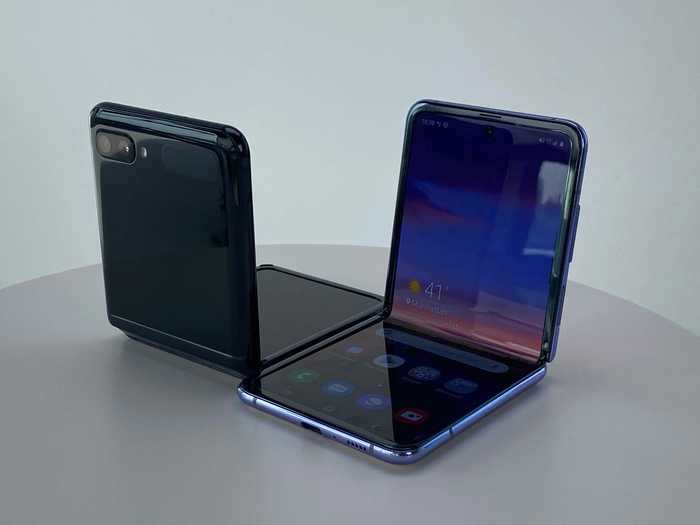
Folding phones may be all the rage and they may well be the future of smartphones, but we strongly recommend that you do not buy them. The first generation of any new buzzworthy tech product is bound to be chock full of problems, and folding phones are no different.
Are they awesome? Are they fascinating? Are they so weird that they're cool? Yes, but they're just not worth the $1,000+ Samsung and Motorola are charging for them.
There have been numerous reports of the folding screens breaking, creasing, and ceasing to function after just days, weeks, or months of use. The Galaxy Fold famously had to be recalled and re-released with new hardware features to protect the fragile screen.
My advice? Wait for the third or fourth generation of foldable phones. Wait for the tech to be ready, and be prepared to be amazed the first time you fold out a tiny phone and it becomes a tablet. It is a truly marvelous feeling.
We look forward to testing the 2020 flagship phones as they launch
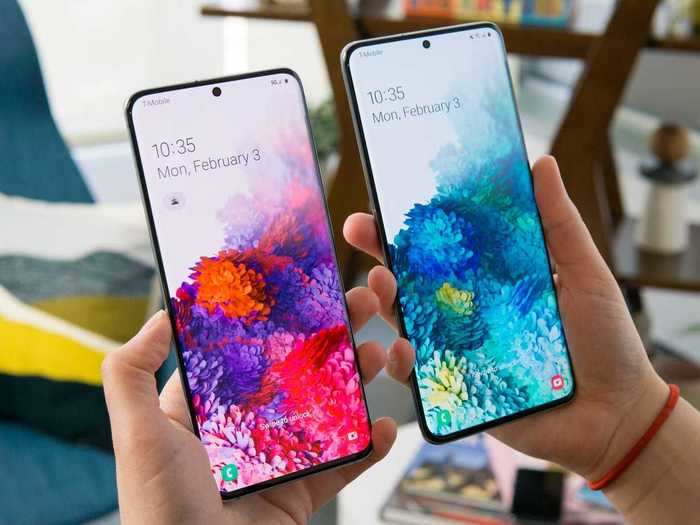
We're a quarter of the way through 2020, and there ares still plenty of great flagship phones we look forward to testing over the coming months
Google's next Pixel phone likely won't launch until October, but we're nevertheless looking forward to testing it. Google's phones are typically well made and showcase the company's idea of what smartphones should look like and how they should work, not to mention they also typically have the best cameras on any smartphone.
Apple's new iPhones usually come in September, where rumors are saying to expect a new design and perhaps even 5G connectivity. We'll have to wait and see.
Samsung still has another major smartphone to release — the successor to the Galaxy Note 10. Expected to be called the Galaxy Note 20, the device may be announced around August. Samsung's Note series are among the few phones that come with a stylus.
And even though OnePlus just recently released a smartphone, the company has adopted a bi-annual release cycle for the last couple years. That means we should expect a new OnePlus smartphone lineup in September.
What else we considered
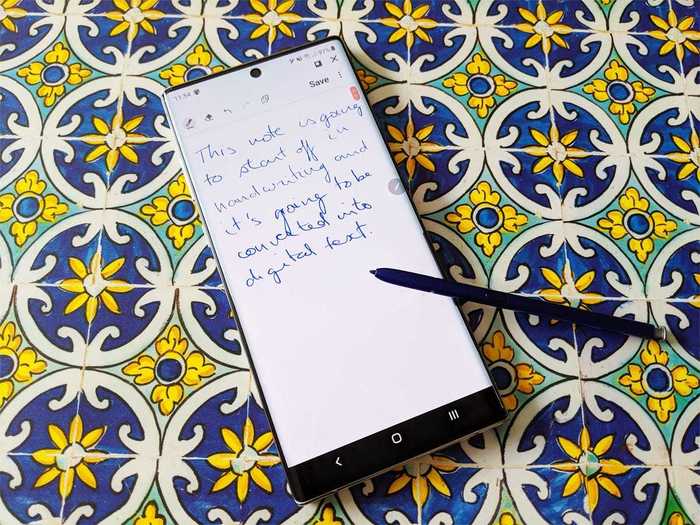
We have tested dozens of new phones over the past year to come up with our top picks. There are many other great options that we haven't included in our top four for a variety of reasons. Here's what else we considered:
The iPhone 11 Pro is the best iPhone for people who want the top-tier flagship model or those who want to have the three cameras: wide, ultra-wide, and telephoto. The Pro Max is the one for people who prefer a big-screen iPhone. We didn't include either model in our top picks because of their high price tags and the fact that most people will be happy with the regular iPhone 11. However, that is absolutely not to say that these two top-level iPhones are not entirely worth buying if you have the money and the inclination.
We chose not to highlight the S10 lineup in this guide because it has been outpaced by the new S20 lineup. The S10 is still worth buying if you don't care for the increased zoom the S20 provides and if you aren't interested in 5G. Now that the S20 is out, the S10 is a good deal.
The Galaxy Note 10 is another great smartphone that is well-worth your money — if you can get a good deal on it or just happen to have the cash to spend nearly $1,000 on a phone. If you do have that much money, though, you are better off with the S20 unless you want a stylus. After all, the Note's S-Pen stylus is the best in the business, so if you like using a stylus to take notes or draw or navigate your screen, this is the phone for you. The Note 10 Plus has an even larger screen if that's of interest to you.
If you want a budget phone that's even cheaper than the Pixel 3a, the Moto G7 is a decent buy. It's included in our guide to the best budget phones. We didn't include it here because the Pixel 3a is the better budget phone pick.
The best high-end flagship phone
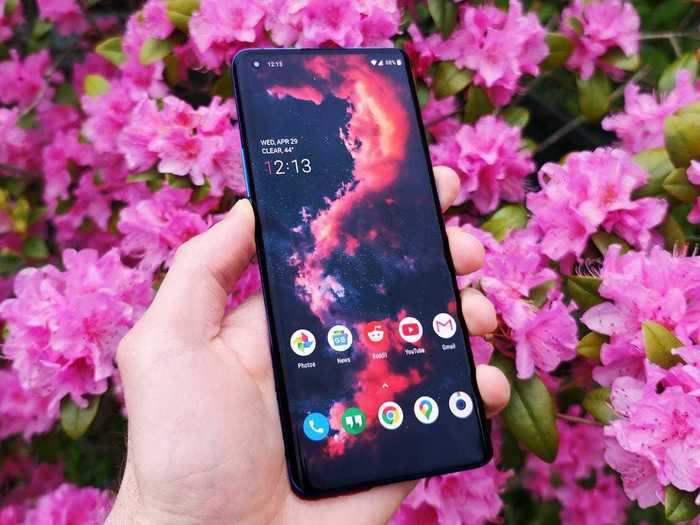
If you want the best high-end smartphone, and you like your smartphones big, the OnePlus 8 Pro should be at the very top of your shortest of short lists.
The large 6.78-inch AMOLED display at a 1440p resolution and 120Hz refresh rate makes an impact, especially if you're coming from phone with the more traditional 60Hz refresh rate. Every swipe, animation, and movement on the screen will look fluid, smooth, and sharp. Accept nothing less than those screen specs if you're paying more than $900.
Design-wise, there's nothing that suggests OnePlus compromised on materials, aesthetics, and overall feel of the OnePlus 8 Pro. It looks and feels every bit as premium as other phones that cost more, including the Samsung Galaxy S20 Plus and the iPhone 11 Pro Max.
The OnePlus 8 Pro comes equipped with the Qualcomm Snapdragon 865 mobile chip and 8GB of RAM, just like the Galaxy 20 series — that's to say there's no compromise on performance, either, even though the OnePlus 8 Pro costs less.
You also get a good triple-lens camera that includes a standard wide lens, an ultra-wide lens, and a 3x optical zoom lens. It's not quite as good as Google's Pixel 4 camera or the iPhone 11 series' cameras. But, then again, those are the top two smartphone cameras — nothing else is as good.
Finally, you get a 3oW charger that's among the fastest chargers that come included with a smartphone. The OnePlus 8 Pro also supports OnePlus' brand new 30W wireless charging, but just note that the wireless charger is a $70 optional extra.
Pros: 5G capable, great cameras, long battery life, sharp screen, speedy processor
Cons: It's a larger phone and there's no smaller version of the OnePlus 8 Pro (the OnePlus 8 is barely smaller than the OnePlus 8, and it has slightly lesser specs)
The best budget phone
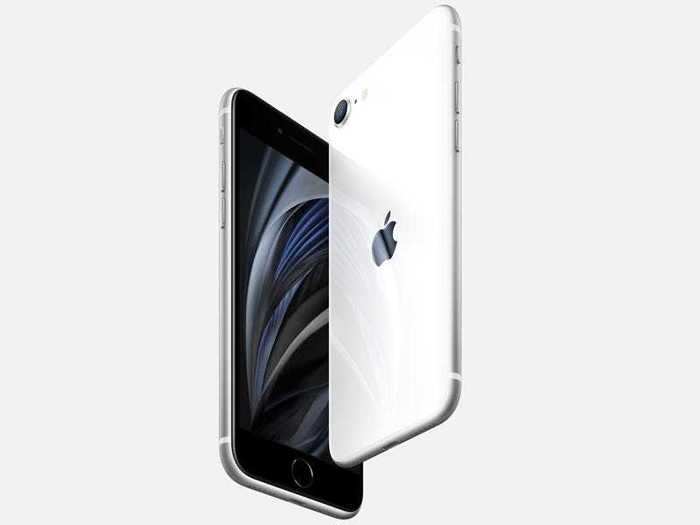
What Apple has done here is very simple. It's taken a 2017 iPhone 8 and slapped the 2019 iPhone 11's A13 mobile chip into it ... and threw the iPhone XR camera system on top. The result is a $400 iPhone that runs iOS and apps as fast as a $700 iPhone. In fact, you could technically say the iPhone SE runs as fast as the $1,100 iPhone 11 Pro Max — they have the same mobile chip, after all.
Like the iPhone 8, the iPhone SE gets a single camera lens, so you won't get the zoomed lenses that are common on modern high-end phones, nor do you get the ultra-wide cameras that have been trending recently. But, you're still getting an iPhone camera, which is to say you're going to get great photos.
The classic design that includes metal and glass can be considered premium, at least from a different time. Indeed, it might look a little dated, but it still looks and feels like a high-end smartphone.
Overall, the iPhone SE comes highly recommended for anyone who like smaller phones, those on a tighter budget, or anyone who "just wants an iPhone," like older relatives or people who don't really care that much about phones or tech.
Pros: Low price, excellent camera, iOS, Apple ecosystem, fast processing power, Touch ID
Cons: Small screen size may not be for everyone, short battery life compared to larger phones
The best flagship phone for less
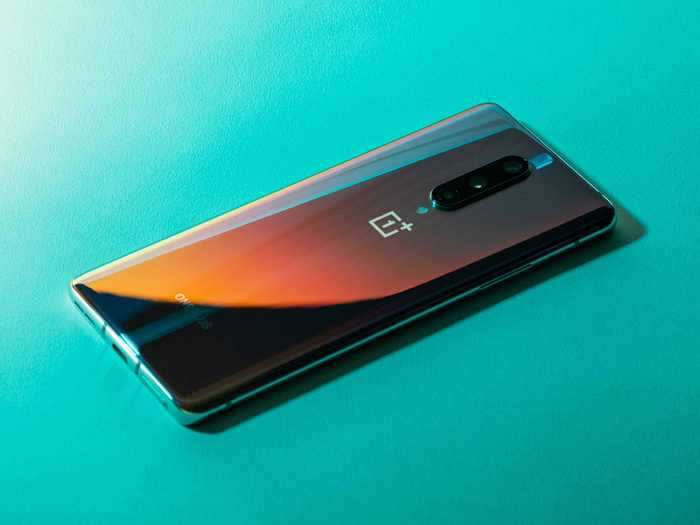
Although it costs less than other high-end flagship phones, the OnePlus 8 boasts nearly all the same features and specs. In our testing, the OnePlus 8 easily holds its own against other big-name flagship phones.
The OnePlus 8 has a beautiful, 90Hz 6.55-inch, AMOLED screen with almost no bezel (the space surrounding the screen that is part of the frame) and no notch (where the front camera is positioned) at the top. It looks quite a bit like the new Samsung Galaxy S20 from the front, because it has a similarly small pinhole for the 16-megapixel selfie camera. Inside, the Qualcomm Snapdragon 865 processor and 8 GB of RAM power the phone — typical specs for a high-end Android flagship in 2020.
The phone's battery life is impressive, and OnePlus' 30W "Warp" charging technology is among the fastest that comes included with a phone. Alas, there's no wireless charging — a premium feature that OnePlus reserved for its OnePlus 8 Pro model. Still, that's not a deal-breaker because this phone has every other high-end feature you could ask for in a phone with a $700 price tag.
The camera on the back has three sensors — the standard wide lens with 48 megapixels, the ultra-wide lens with 16 megapixels, and a 2-megapixel macro lens. The camera is in the same league as other great flagships in most settings, although it performs on the lower end of the flagship range — one of the compromises of such a great price.
The back of the phone is made from glass and a slick metal band runs around the phone's edges. It feels great in the hand — especially if you get the frosted glass texture.
You can get the OnePlus 8 in a frosted green, glossy color-shifting lavender, and glossy black.
Keep in mind that glass phones are fragile, though, so you're likely to end up using one of the gorgeous cases OnePlus sells for added protection. Luckily, those are great looking, too, so it's not much of a sacrifice.
Pros: AMOLED screen with a 90Hz refresh rate, fast facial recognition and fingerprint sensor, three cameras, affordable, quick charging, 5G
Cons: No wireless charging
The best Google phone
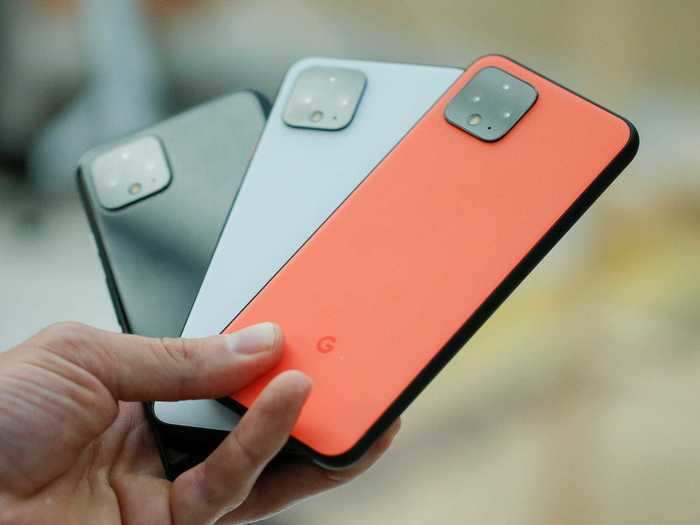
The Google Pixel 4 is the latest flagship phone that's made by Google. It may not be as modern, sleek, and flashy as some of the other high-end phones, but it is just as capable, costs less, and has clean Android software that gets regular updates. If this matters to you, the Pixel 4 is a good choice.
It has a 5.7-inch Full HD OLED screen that looks crisp, bright, and colorful. it's powered by the Qualcomm Snapdragon 855 processor and 6GB of RAM, which should be more than enough for most people's needs.
You can get it with either 64 or 128GB of storage, though the extra storage will cost you more. It offers fast charging and wireless charging to make juicing up easier, and its battery life is respectable.
On the back, you'll find two camera lenses: a 12-megapixel Dual Pixel lens and a 16-megapixel telephoto lens. Thanks to these two cameras and Google's computational photography tech, the Pixel 4 takes superb photographs. Just like the budget Pixel 3a we mention in this guide, the Pixel 4's Night Mode allows for impressive photos in low light. Similar to the iPhone 11, you can use your face to unlock the Pixel 4, although it isn't as advanced as Apple's technology.
Google also promises to give three years of Android OS updates and security patches, which is more than you'll get with just about any other Android phone. That means your phone will be more secure, run better, and get new features for longer. And, Google's devices tend to get the company's latest and best software, like real-time transcription.
We think this makes the Pixel 4 worthwhile even if it's not as glamorous or flashy as the new Samsung Galaxy S20 or iPhone 11 Pro. It's also more affordable than other flagship phones. If you want a bigger 6.3-inch OLED screen, you can pick up the Pixel 4 XL instead, for an extra cost.
Pros: Fast processor, three years of Android updates from Google, great cameras
Cons: Not as modern looking as other flagships
The best iPhone
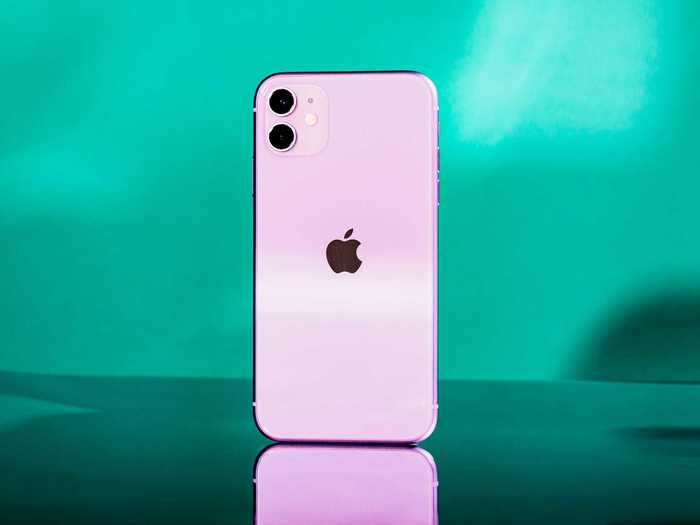
If you don't want to spend $1,000 or more for the top-tier iPhone 11 Pro or Pro Max, but you still want a great smartphone, the iPhone 11 is the one for you. It offers the exact same processing power as the flagship iPhone 11 Pro, but it costs several hundreds of dollars less. You can also get lots of great carrier deals on the iPhone 11 right now to drop the price even further.
To hit its sweet price points, the iPhone 11 sacrifices a third camera lens for zooming and it has an LCD screen instead of an OLED. It's also available in only one size (the iPhone 11 Pro comes in two) and uses an aluminum frame with glass front and back that has a less-polished finish (iPhone 11 Pro is made out of stainless steel). But for most people, this is the iPhone to get.
The iPhone 11 is powered by the same Apple A13 Bionic processor as the Pro model and it offers more than enough processing power to compete with any other flagship smartphone in 2020. It has wireless charging and better battery life than previous iPhones. In terms of durability, the aluminum frame is plenty strong and it's water and dust resistant like the Pro version, but, like all smartphones, by no means is it indestructible.
On the back of the phone, you get a 12-megapixel camera with dual lenses: an ultra-wide and regular wide. In our tests, the cameras took excellent photos and we found that the new night mode makes pictures taken in low-light look much better than they have on previous iPhones.
The front-facing camera is also 12-megapixels and it can create the blurred bokeh effect on your selfies so you're the focus instead of the background. For security, you can unlock the iPhone 11 with Face ID, Apple's facial-recognition feature.
The entry-level 64GB of storage should be more than enough for most people, but if you want more, you can get 128 or 256GB of storage instead. It will cost you more money, though.
The iPhone 11 comes in lots of fun colors, including yellow, green, purple, black, white, and red. It's also water-resistant for 30 minutes in depths of up to 2 meters.
Pros: Affordable price for an iPhone, fast A13 processor, sharp 6.1-inch LCD screen, long battery life, dual-camera setup, wireless charging
Cons: It's missing the OLED screen and the telephoto camera lens of the iPhone 11 Pro and Pro Max
READ MORE ARTICLES ON
Popular Right Now
Popular Keywords
- India’s wearables market decline
- Vivo V40 Pro vs OnePlus 12R
- Nothing Phone (2a) Plus vs OnePlus Nord 4
- Upcoming smartphones launching in August
- Nothing Phone (2a) review
- Current Location in Google
- Hide Whatsapp Messages
- Phone is hacked or not
- Whatsapp Deleted Messages
- Download photos from Whatsapp
- Instagram Messages
- How to lock facebook profile
- Android 14
- Unfollowed on Instagram
Advertisement